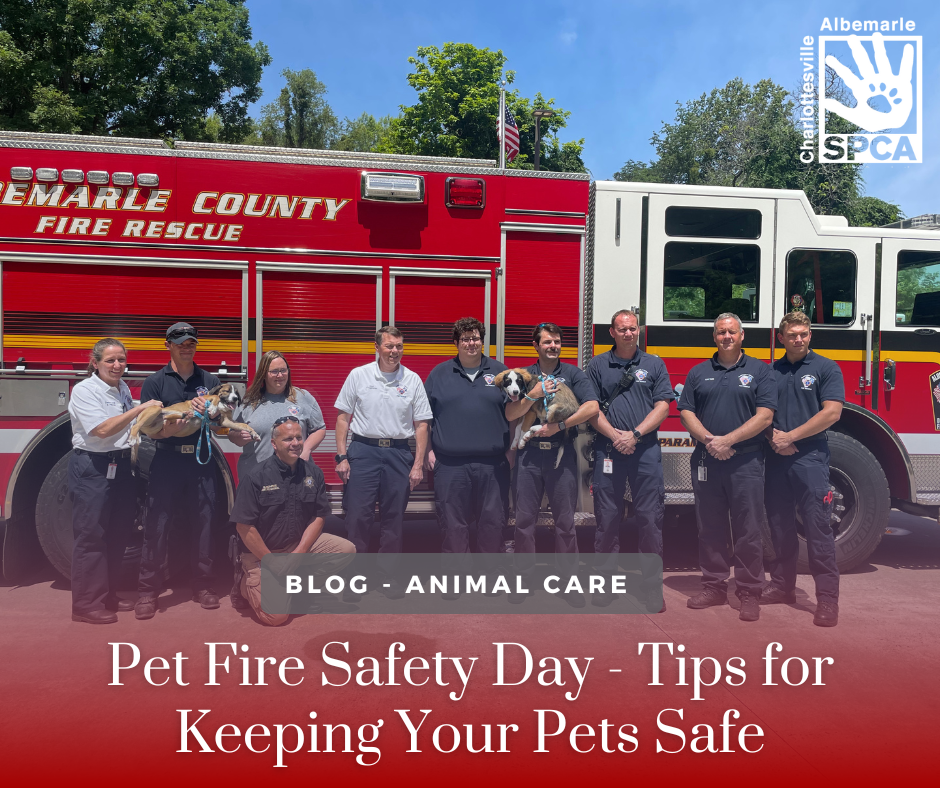Fire emergencies can strike without warning, putting both humans and pets at risk. As a responsible pet owner, it’s crucial to prepare and safeguard your furry friends from fire hazards and keep Sparky’s name from becoming too literal! A cat to a candle can be like a moth to a flame – according to the National Fire Protection Association, nearly 1000 fires are started by pets each year. Keep that curiosity extinguished! Here are some essential tips to prevent accidental fires and ensure the safety of your pets in case of a fire:
1. Make a Pet Emergency Plan
Your pets should be part of your family’s emergency evacuation plan. Prepare in advance by:
- Identifying Pet-Friendly Shelters: Know where you can stay if you must evacuate, including pet-friendly hotels or homes.
- Planning Routes: Map out multiple escape routes and designate a safe meeting place outside your home.
During fire drills, make sure to include your pets in the evacuation practice. Familiarize them with the escape route and the sound of alarms to reduce their anxiety during a real emergency.
2. Keep Collars and Tags Updated
Pets can become disoriented and separated during a fire. Ensure they can be quickly reunited with you by:
- Updating Identification Tags: Include your current contact information on their collars, and make sure collars are well-fitted.
- Using Microchips: Consider microchipping your pets for an additional layer of identification that is not at risk of falling off or being destroyed. Make sure your contact information is up to day in your microchip provider’s registry.
If your pet gets lost, their ID tags will help rescuers contact you quickly. Always check that the information is accurate and visible.
3. Practice Fire Drills
Fire drills aren’t just for humans. Help your pets become accustomed to emergency procedures by:
- Simulating Evacuations: Practice leaving your home with your pets.
- Using Positive Reinforcement: Reward them with treats and praise to encourage cooperation.
Schedule regular fire drills and practice leading your pets to their carriers or designated safe spots. This can make real evacuations smoother and less stressful for everyone.
4. Secure Open Flames
Pets are naturally curious, which can be dangerous around open flames. Protect them by:
-
- Using Flameless Alternatives: Opt for flameless candles or pet-safe alternatives.
- Supervising Open Flames: Never leave lit candles, stovetop burners, or fireplaces unattended.
- Keep the kitchen child and pet-free: Children and pets should be at least 3 feet from heat sources used for cooking at all times – consider using baby-gates as a physical barrier in front of the kitchen’s entrance.
5. Pet-Proof Your Home
Pets often explore their surroundings, sometimes with dangerous consequences. Minimize fire risks by:
- Removing Fire Hazards: Secure electrical cords, loose wires, and flammable materials.
- Blocking Access: Ensure that pets can’t reach areas with high fire risks, such as kitchens and laundry rooms.
- f
Install cord covers and keep flammable materials in pet-proof storage to prevent pets from chewing or knocking them over.
6. Store Hazardous Materials Safely
Household chemicals can be toxic to pets and may also pose fire risks. Keep them safe by:
- Securing Hazardous Substances: Store cleaning products, chemicals, and other dangerous items in cabinets or high places out of pets’ reach.
- Using Childproof Locks: Install locks on cabinets to prevent curious pets from accessing hazardous materials.
Keep all potentially toxic substances locked away to prevent accidental ingestion or spillage that could lead to fires.
7. Install Smoke Detectors
Early detection of fires is crucial for safety. Protect your home and pets by:
- Installing Smoke Detectors: Place them throughout your home and test them regularly.
- Using Monitored Systems: Consider smoke detectors that alert emergency services, providing added protection even when you’re not home.
Install smoke detectors in pet sleeping areas and common rooms to ensure early warning for both you and your pets.
8. Use Pet-Safe Fire Retardants
In case of a fire, slowing its spread can save lives. Treat your home with:
- Fire Retardants: Apply pet-safe fire retardants to furniture and other household items.
Look for products specifically labeled as safe for pets and use them on drapes, carpets, and upholstery.
9. Have a Pet Emergency Kit
Prepare for emergencies by assembling a kit with essential supplies:
- Include Essentials: Pack food, water, portable bowls, medications, leashes, carriers, and veterinary records.
- Keep It Accessible: Store the kit in an easily accessible location for quick grab-and-go in case of evacuation.
Regularly update your emergency kit with fresh supplies and ensure it’s kept in a designated spot known to all family members.
By taking these steps, you can significantly reduce the risk of fire-related injuries and ensure the safety of your pets. Remember, preparation and vigilance are key to protecting your furry family members in any emergency.
If you ever in a emergency, call 911 immediately. For more fire safety information contact your local fire department or public safety office! Stay safe and keep those tails wagging! 🐾




Leave A Comment